Poetry as an art has always occupied a prominent place in Hungarian society. As early as 170 years ago, on 19 July 1851, the Hölgyfutár described the day of poetry as:
“The crown, the brilliant crown of the arts, is poetry.
The sun of poetry, is an eternal sun for the arts.
The rays of this sun must shine irresistibly through the forms of art.
In the world of art, this sun must never go down, it must never go out.”
Despite all, the first official Day of Hungarian Poetry took place only 65 years ago, but not on the birthday of Attila József as nowadays, but during the summer book week in June 1956. A few years later, in 1964, 11 April became an official holiday.
.jpg)
National Poetry Day has been celebrated officially since 1964 on Attila József's birthday. László Marton's work of the poet can be seen on the southern side of the Parliament, on the banks of the Danube (Photo: Balázs Both/pestbuda.hu)
Every year on National Poetry Day, Hungarians pay tribute to the Hungarian art of poetry with poet meetings, poetry readings, book presentations and lectures. However, due to the coronavirus, the festive events were pushed into the online space for the second year in a row. Thus Pestbuda decided to showcase several sculptures on Budapest's famous buildings, which appear as allegories of poetry.
Poetry on the Royal Palace of Buda Castle
On the facade terrace railing of one of the Royal Palace's buildings stand eight sculptures, each an allegorical representation of a form of art. On the building – which currently houses the National Gallery – the sculptures include allegorical representations of sculpture, music, acting, painting, architecture, dance, literature, and poetry.
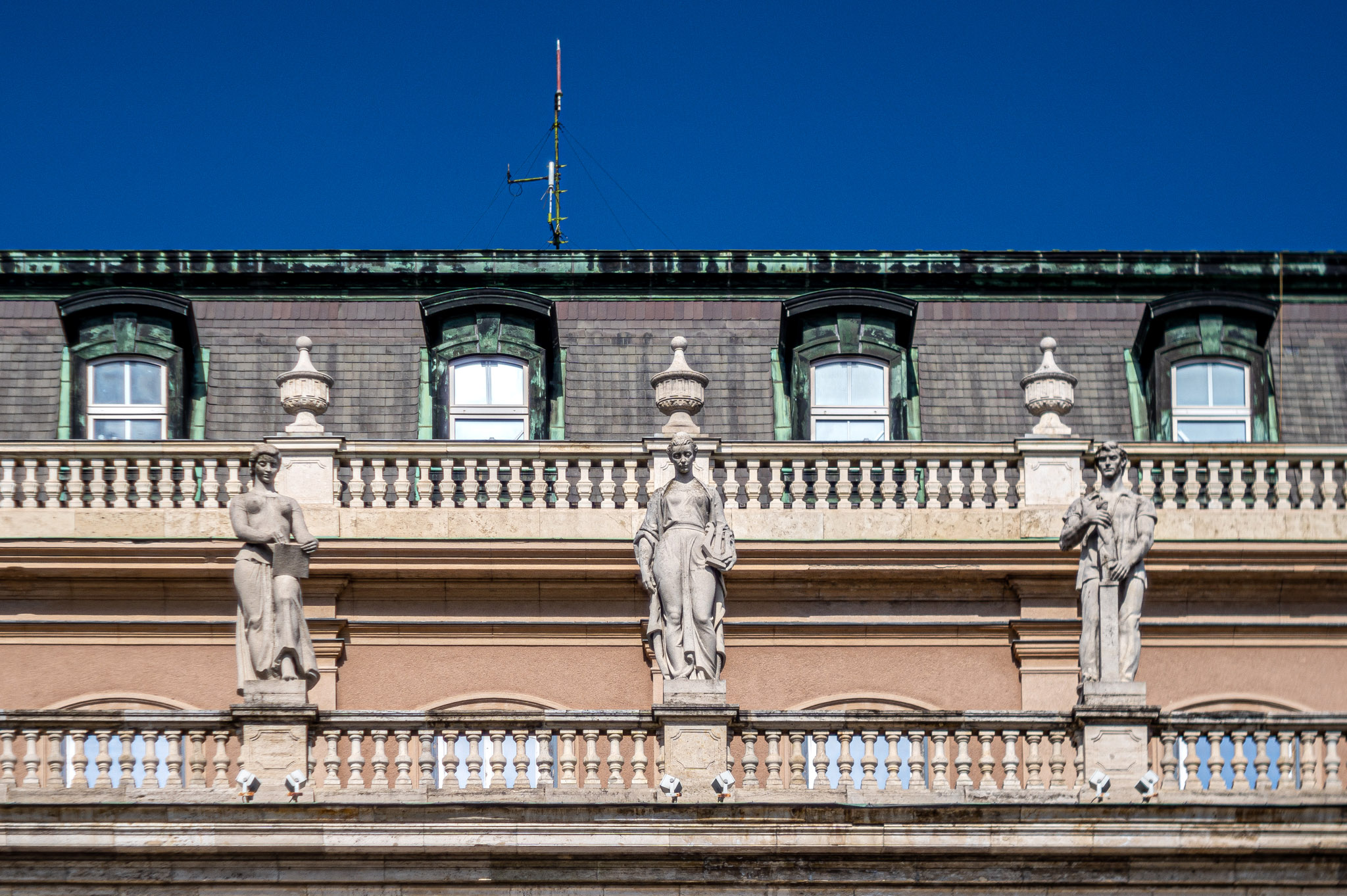
A few of the sculptures on the facade of the National Gallery. From left to right: the allegorical sculpture of painting, poetry, and sculpture. (Photo: Balázs Both/pestbuda.hu)
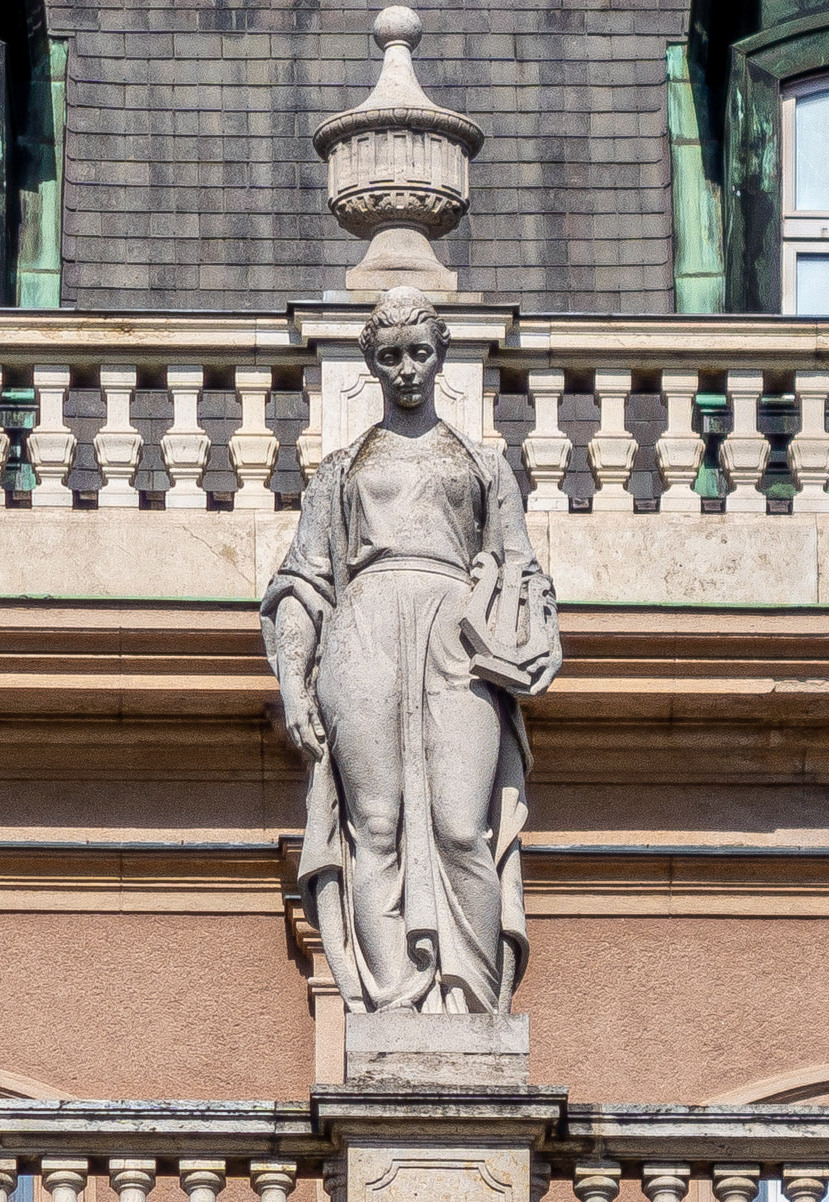 T
T
he statue of poetry: a female figure in a long dress with a lute in her hand facing forward (Photo: Balázs Both/pestbuda.hu)
Poetry, or as it is mentioned, the statue of Lyra is the fifth from the left, depicted as a beautiful female figure in a long dress with a lute in her hand. The lute or Lyra are the best-known forms of representing poetry. It is also often depicted with a paper roll and a writing instrument. The eight current sculptures were not modelled on the original sculptures. They could not recreate them as they were damaged in World War II. Today's sculptures were made in the 1960s under the direction of Pál Pátzay, and sculptor József Ispánki made the statue of poetry.
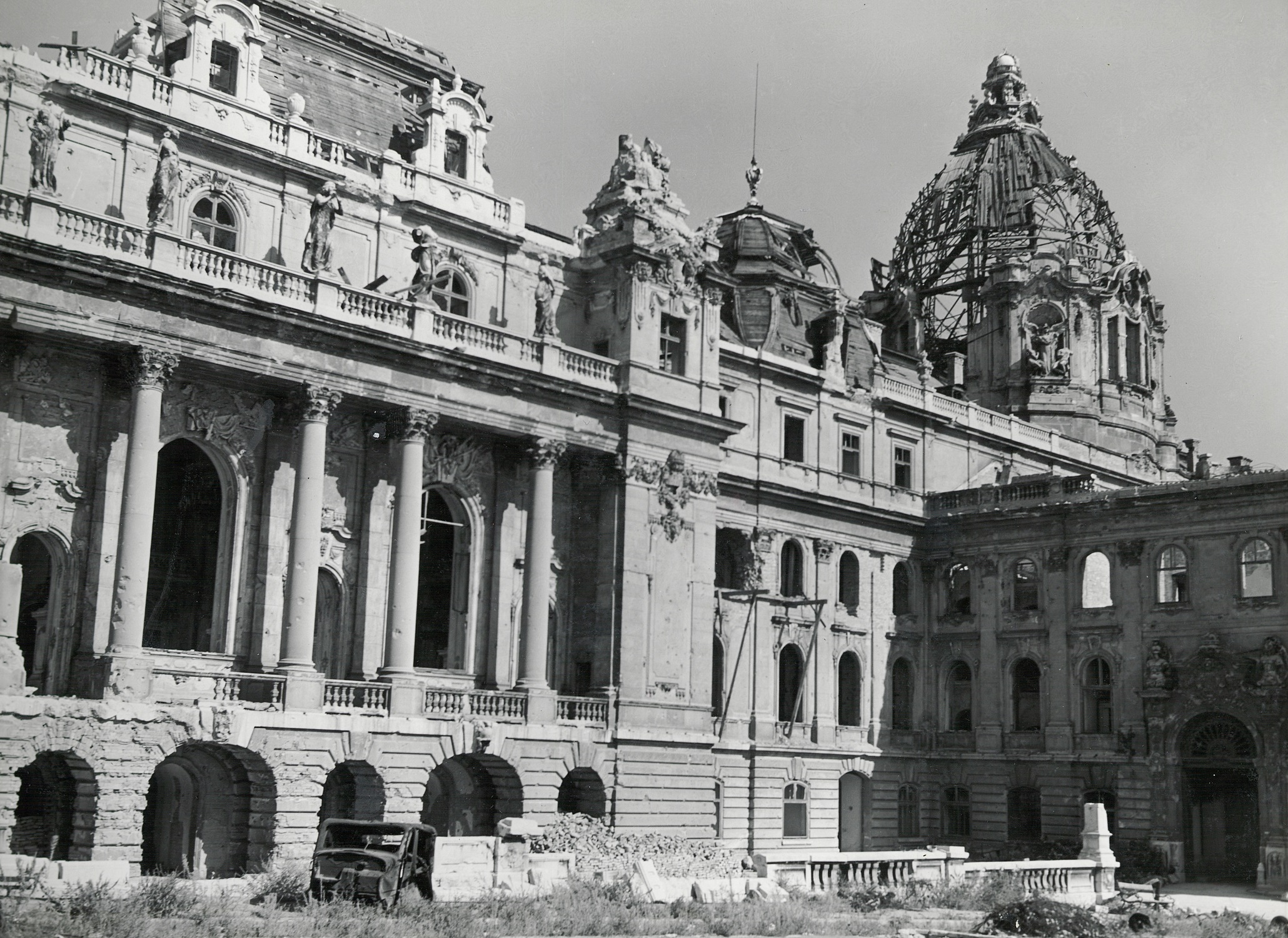
The condition of the ruined royal palace and damaged statues in 1945 (Photo: Fortepan/No: 105721)
Allegorical arts at the Hungarian Academy of Sciences
The central building of the Hungarian Academy of Sciences is decorated with several sophisticated sculptures. The four female figures on the Danube facade are allegories of archaeology, poetry, astronomy, and politics. The Academy was designed by Friedrich August Stüler between 1862 and 1865. The sculptures were originally based on the works of the German sculptor Emil Wolff, and they came from Berlin to be placed on the facade of the Academy.
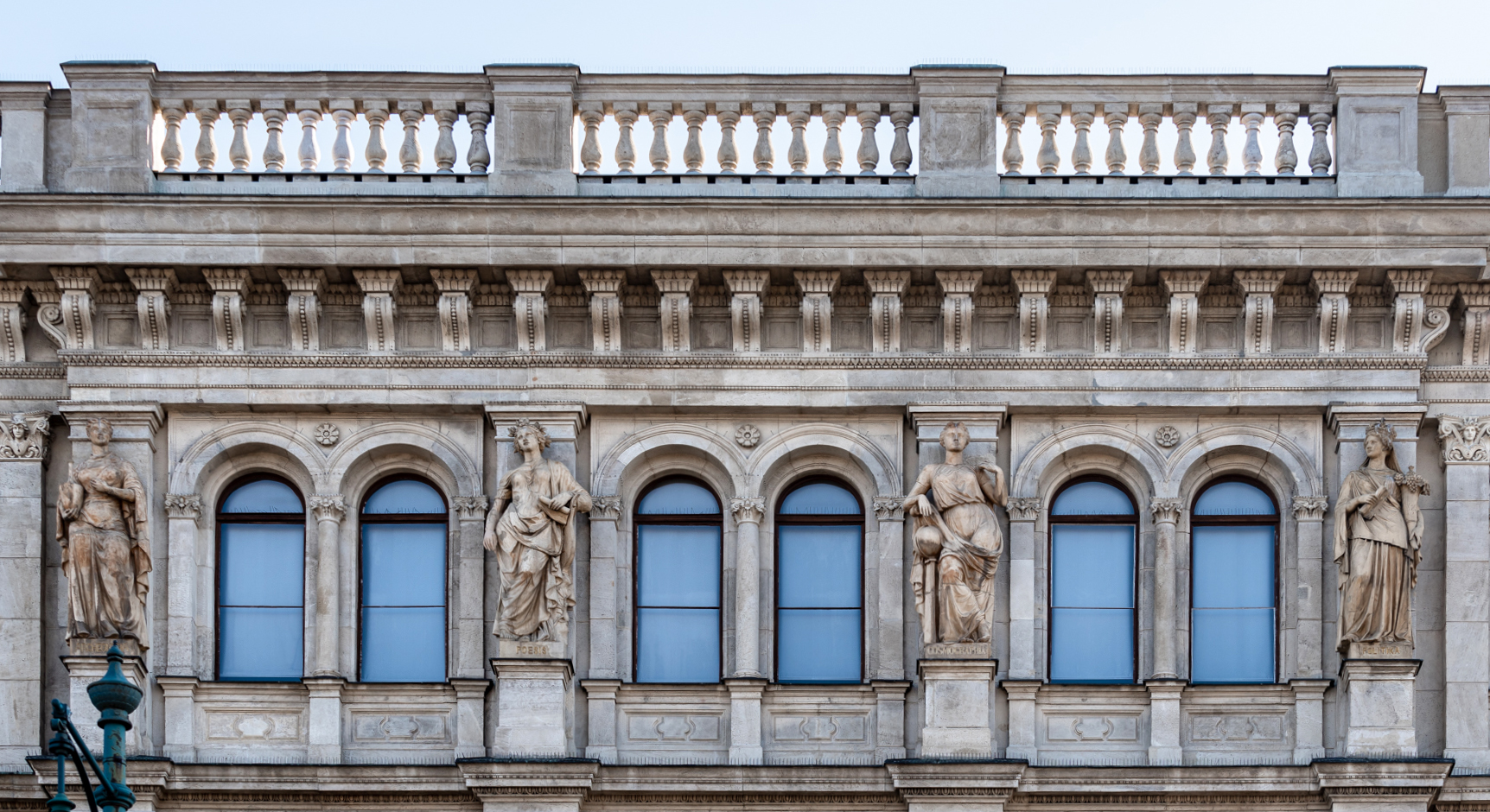
The facade of the Hungarian Academy of Sciences overlooking the Danube with the allegorical sculptures. From left to right: the sculptures of archaeology, poetry, astronomy, and politics (Photo: Balázs Both/pestbuda.hu)
In World War II, the statues of archaeology and astronomy were damaged and had to be recreated, but fortunately, poetry and politics retained their original beauty. The allegorical statue of poetry, or Poesis, appears in the form of a woman with a laurel wreath. Less noticeable than the scroll and pen, it still displays one of the well-known features of poetry, the lute.
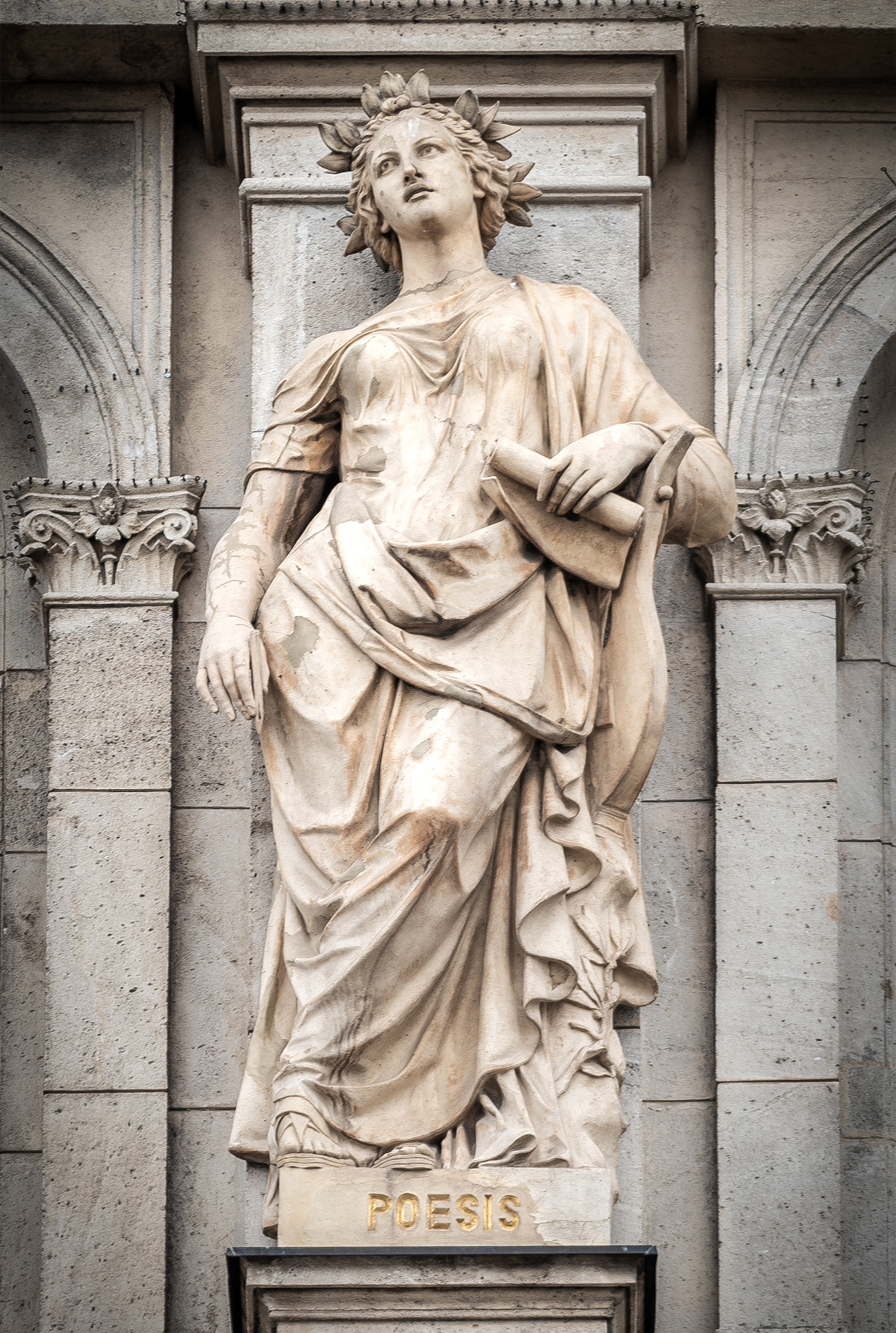
The statue of poetry on the side facade of the Academy, with a pen and a paper roll in hand (Photo: Balázs Both/pestbuda.hu)
Love poetry on the Opera House
The building of the Hungarian State Opera House was completed in 1884 according to the plans of Miklós Ybl. King Franz Joseph (Ferenc József) also attended the luxurious palace's opening performance on Andrássy Avenue. It is no coincidence that the representative appearance of the building required countless beautiful statues. According to some sources, so many sculptures adorn the Opera House that perhaps only the building of the Parliament has more in Hungary.
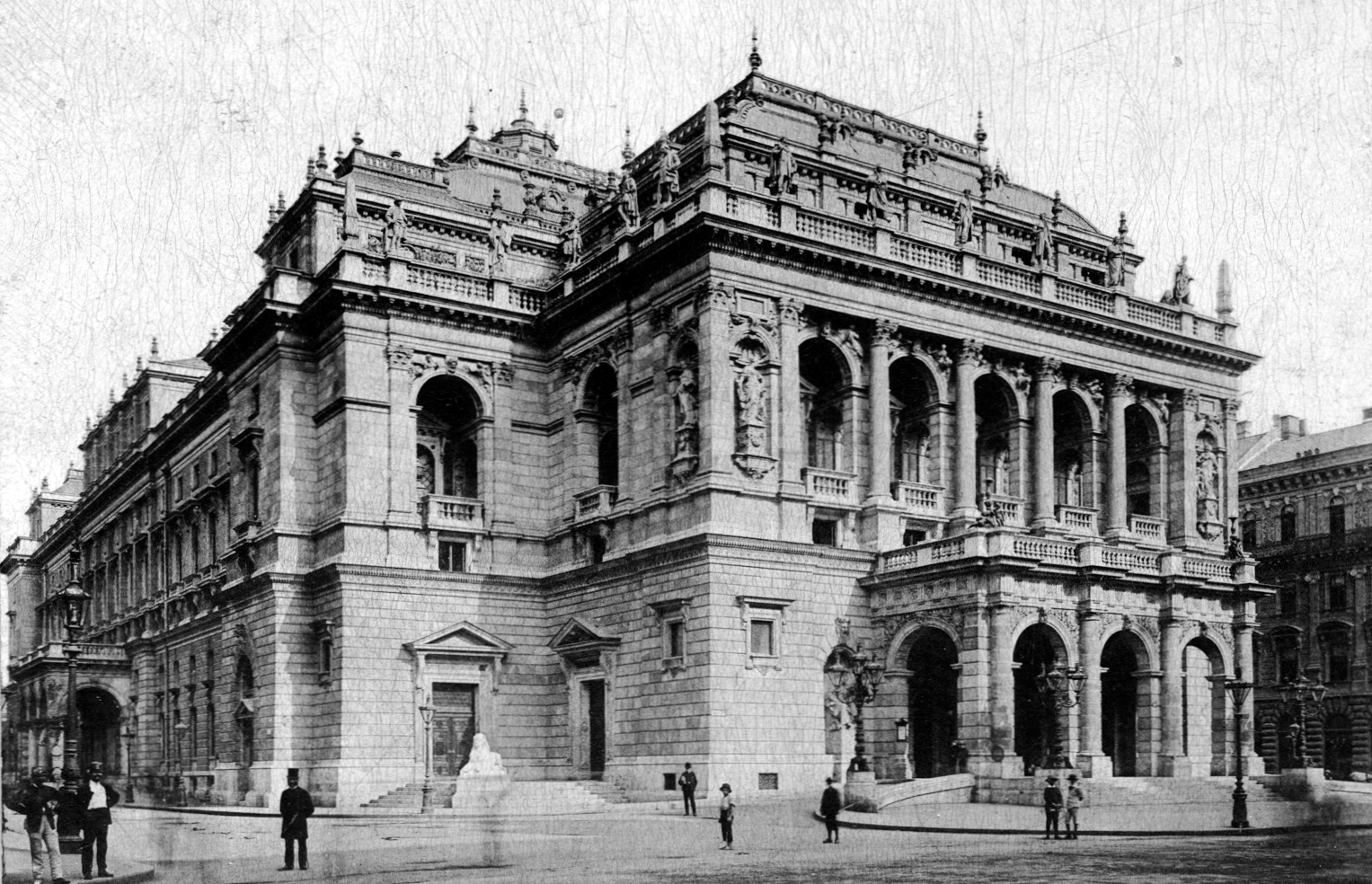
The building of the Hungarian State Opera House designed by Miklós Ybl in 1900 (Photo: Fortepan/No.: 13252)
Some of the sculptures are related to poetry, but perhaps the best known is the sculpture of Erato, the muse of love poetry, created by Leó Feszler on the main facade. The statue is centrally located in the left booth of the main facade, with a lute in its hand, just above Ferenc Erkel's statue. Since the Opera House's renovation is still in progress, no current photos of the beautiful statue can be taken. Only a few archive images are available. The lute can also be observed in the hands of the statue. Next to it stands Eros, the god of love, in the form of a putto.
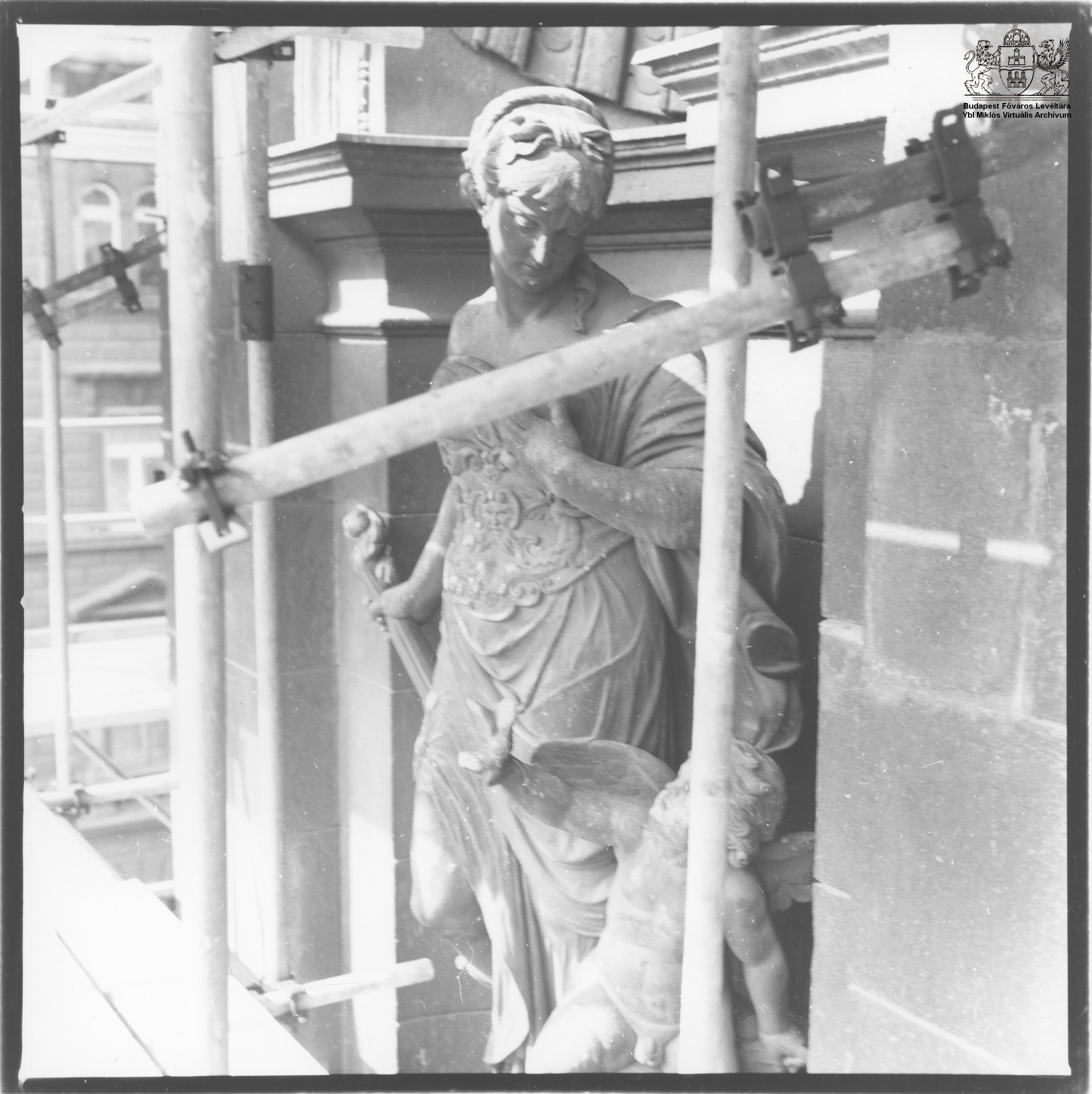
Statue of Erato, the muse of love poetry on the main facade of the Opera House in the 1980s (Photo: Miklós Ybl Virtual Archive/BFL_xv_17_e_306_2242_029)
To this day, many Feszler works on the buildings and squares of the capital, including some sculptures and ornaments of the Buda Castle Garden Bazaar (Várkert Bazár), the Opera House, Erzsébet Square and St. Stephen's Basilica. The 17 July 1927 issue of the Magyarság newspaper wrote about Fessler's sculptures. “The artworks of Leó Fessler are one and all sculptures that almost exclusively represent the neoclassical art style developed in 19th-century Budapest, so they are also art-historical documents of the Hungarian Neoclassical sculptors.”

Close-up of the statue of Erato, the muse of love poetry on the main facade of the Opera House in the 1980s (Photo: Ybl Miklós Virtual Archive/BFL_xv_17_e_306_2242_030)
Allegorical sculptures on the Pesti Vigadó
On the facade of Pesti Vigadó ('Place for Merriment'), built between 1860 and 1865 according to the plans of Frigyes Feszl, many beautiful allegorical female figures can be spotted. In the central part, there are six muse-like female statues, all symbolising music and related activities.
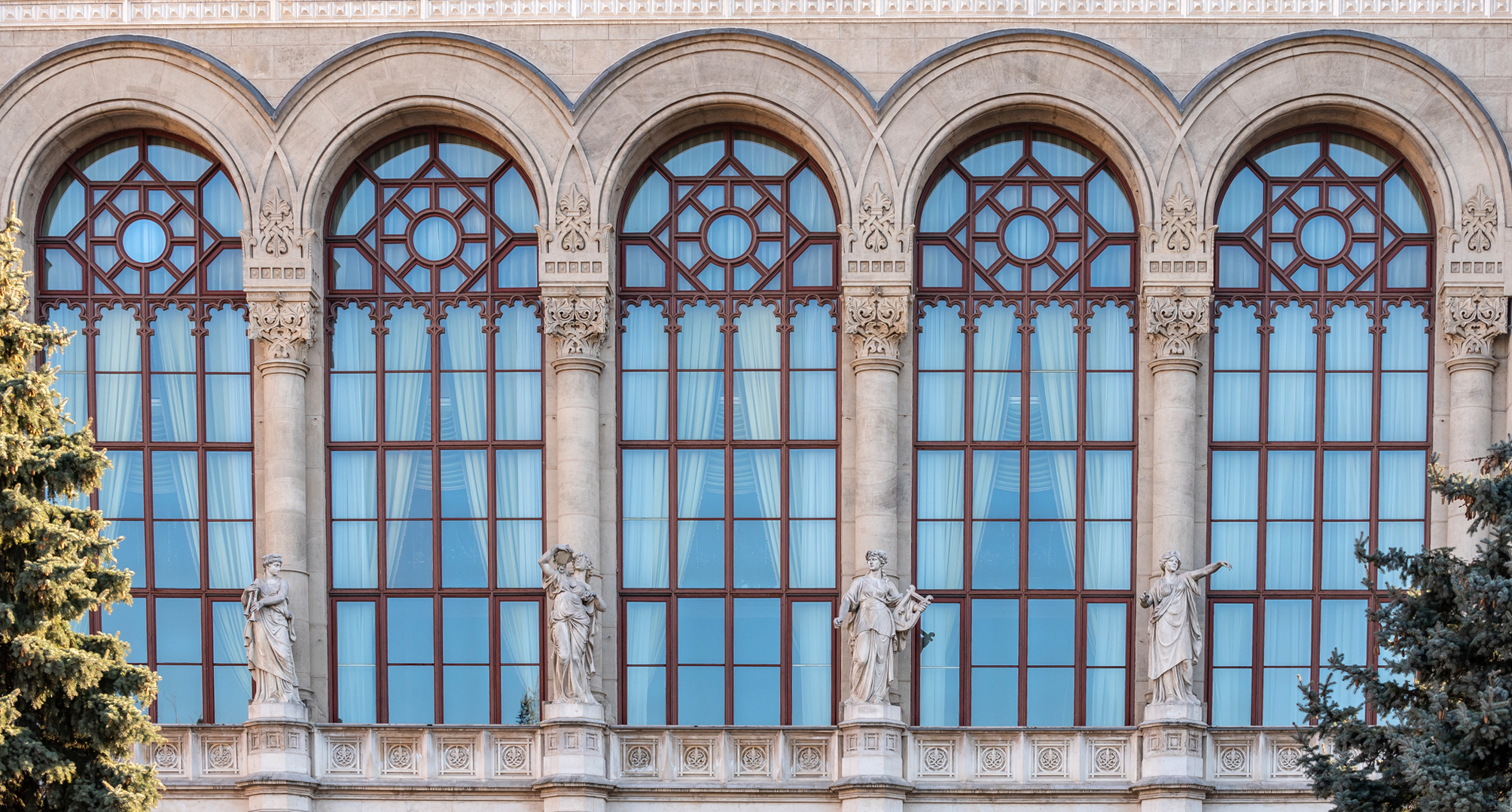
Sculptures on the central window of the Vigadó (Photo: Balázs Both/pestbuda.hu)
One of the six sculptures was named Lyra, another word for lute, so it is also tied to poetry. The statue shown on the facade of the National Gallery is also called Lyra, which also depicts poetry. The sculptor Béla Brestyánszky made the female statue holding the lute in 1884, which was severely damaged in the war, so most of the sculptures visible today were recarved.
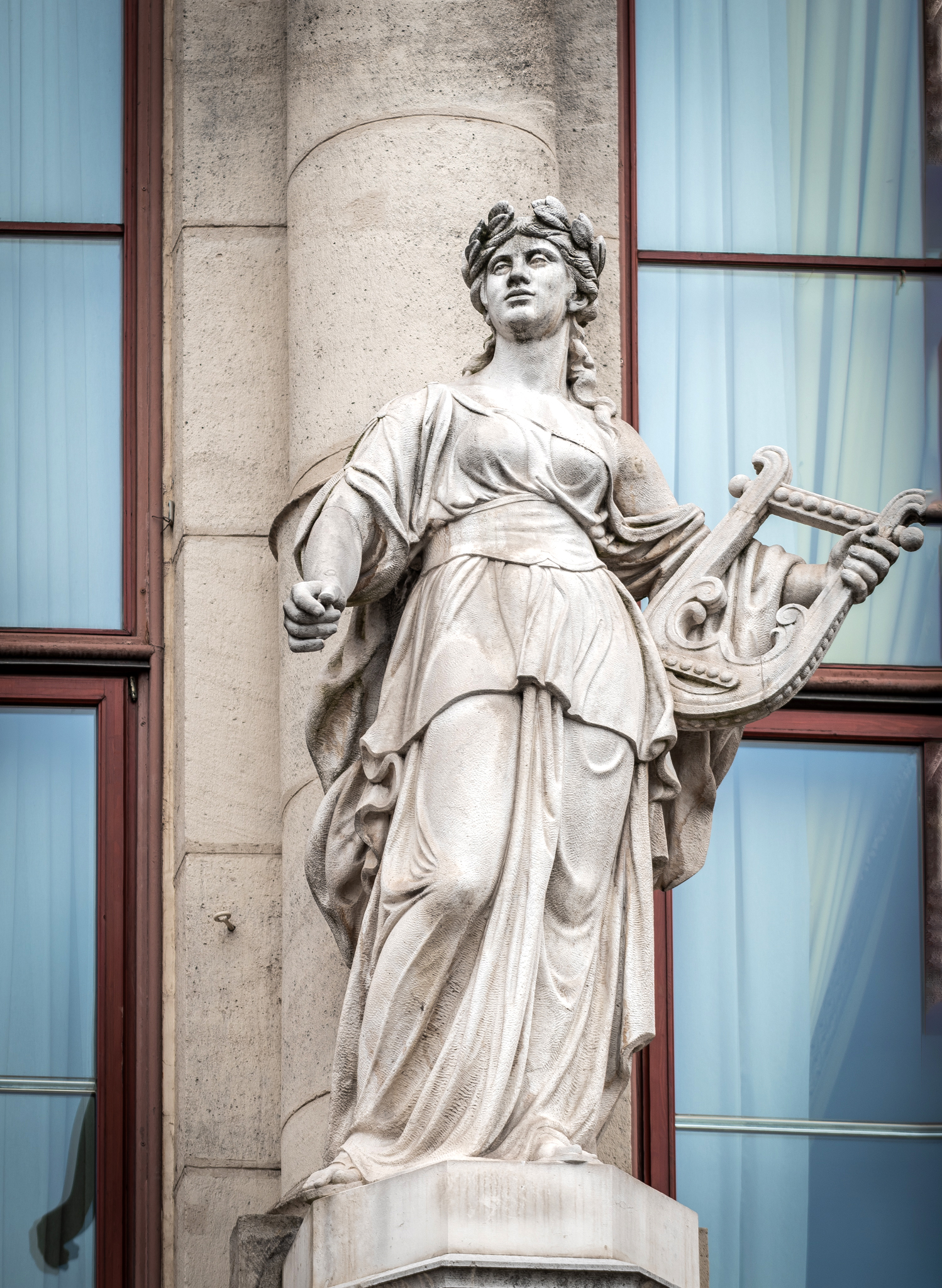
Statue of Lyra on the Vigadó building (Photo: Balázs Both/pestbuda.hu)
Sculptures of the Royal Hungarian Curia
The Royal Hungarian Curia was built near the Parliament between 1893 and 1896 according to the plans of Alajos Hauszmann. The building, which housed the Museum of Ethnography for decades, will soon return to its old function. The artworks on the roof of the huge building are less visible to pedestrians in the square, although the allegorical sculptures at great heights are worthy of attention. The sculptures form allegories of twelve different activities, including architecture, painting, acting, sculpture and, of course, literature.
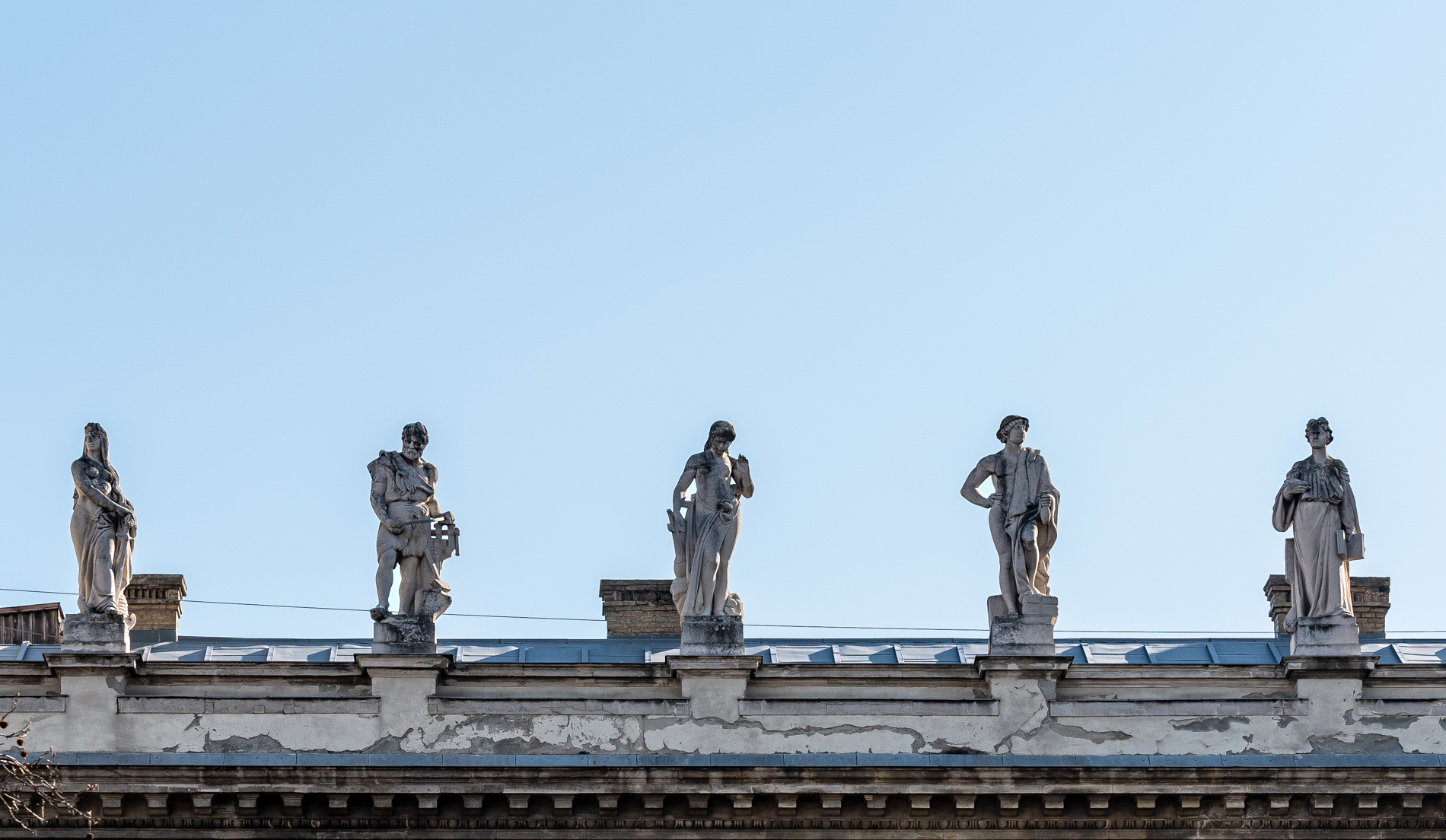
Some of the 12 statues on the pedestals of the attic above the main ledge of the former Royal Hungarian Curia (Photo: Balázs Both/pestbuda.hu)
The sculptor József Damkó depicted the allegory of literature in the form of a woman holding a pen in one hand and a book in the other. However, due to the war, these statues did not remain in their original state either, so visible artworks are only recarvings.
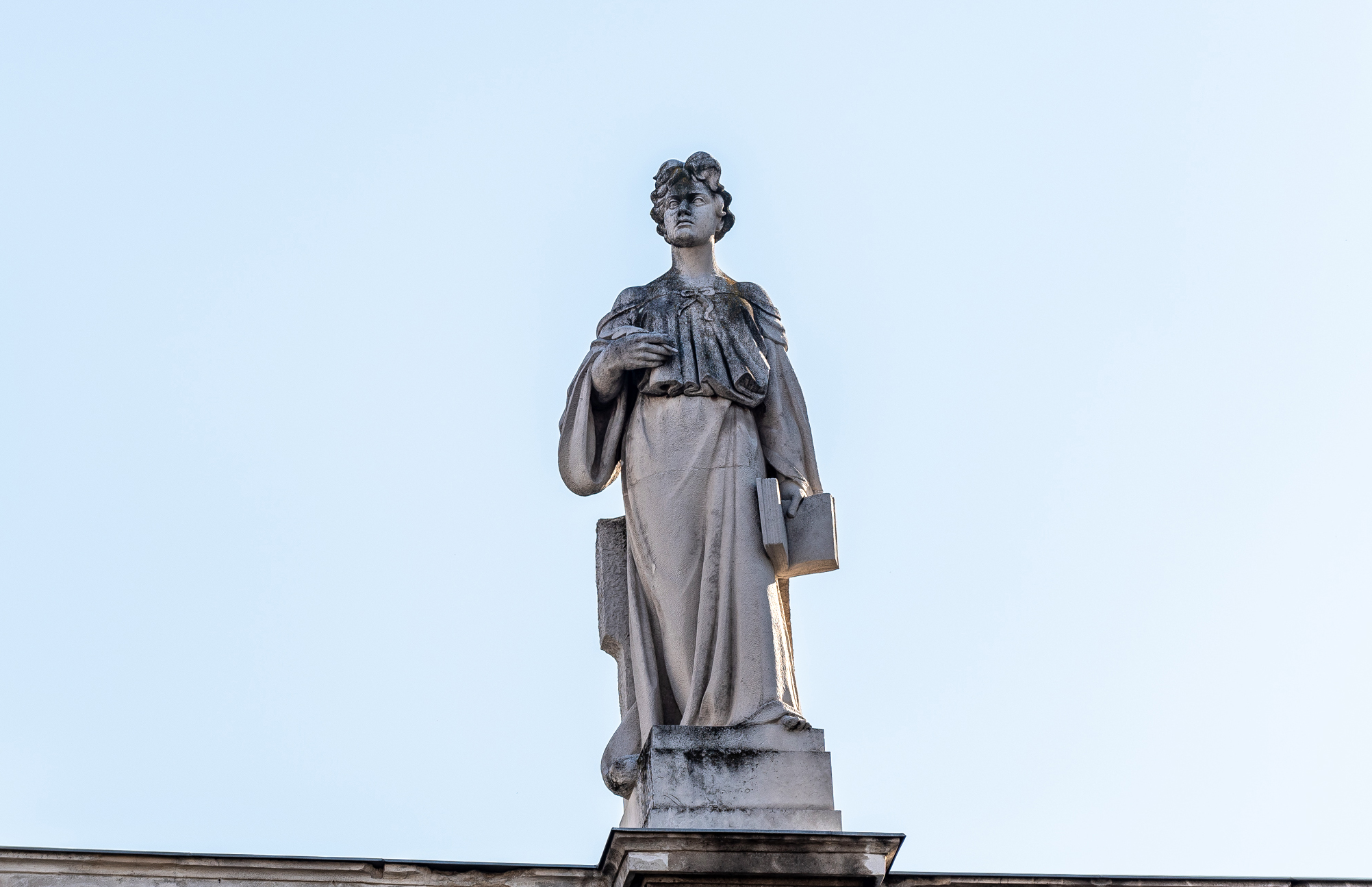
Sculptor József Damkó's statue shaping literature on the top of today's Museum of Ethnography (Photo: Balázs Both/pestbuda.hu)
There are many beautiful allegorical sculptures in the capital that capture poetry as a form of art that is not only worthy of admiration on National Poetry Day. Hopefully, the day of poetry itself will not be locked inside for a long time, and next year, the public will be free to celebrate the day of Hungarian poetic art again.
Cover photo: Sculptor József Damkó's statue of literature on the top of the current Museum of Ethnography (Photo: Balázs Both/pestbuda.hu)

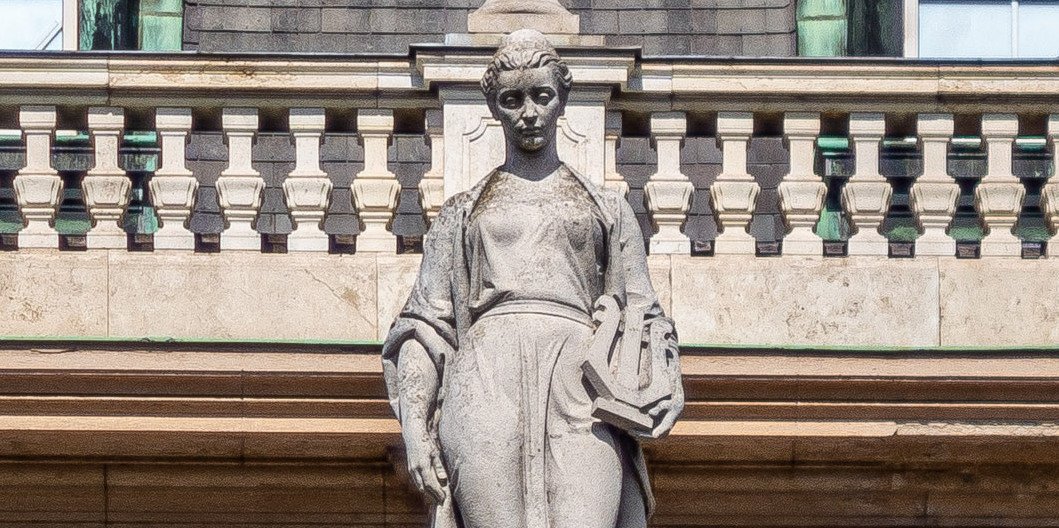

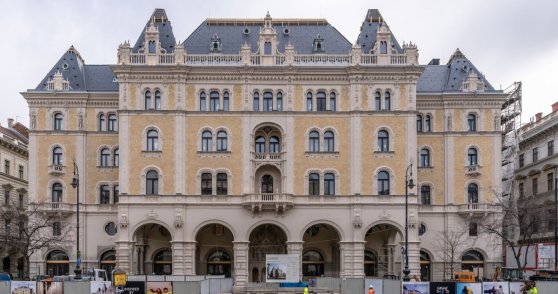

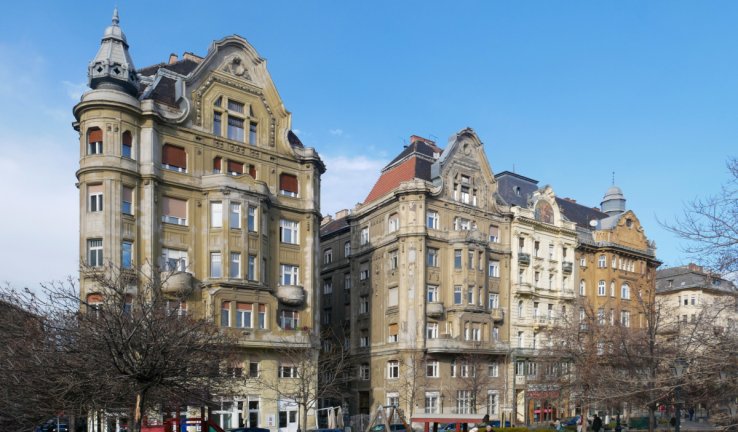
































Hozzászólások
Log in or register to comment!
Login Registration